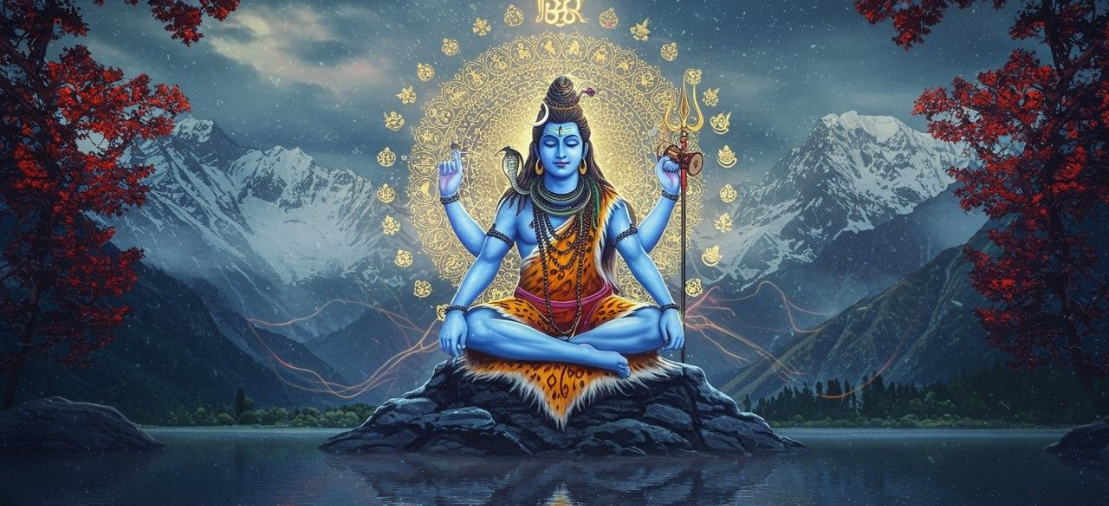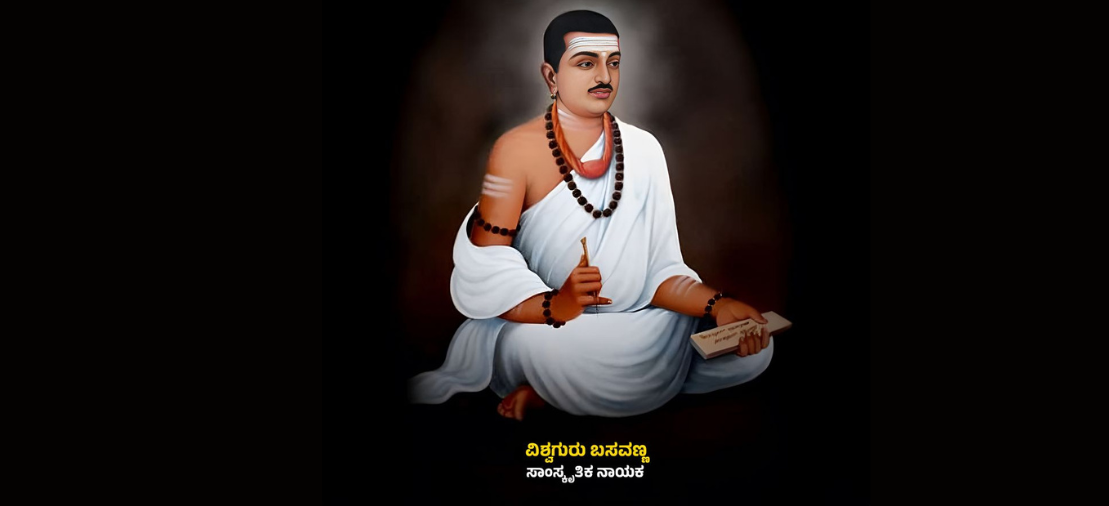-

Kashmir Shaivism and Lingaayata Shaivism
Preface
Having developed almost entirely independent of Kashmiri Shaivism, Karnataka’s Lingayata Shaivism has a rich and distinct historical origin. Founded by Basavanna in the 12th century AD, it has been active in shaping Karnataka's socio-cultural and political landscape. It evolved through the powerful medium of Vachana Sahitya and firmly rejected Jainism, Buddhism, and the Vedic tradition (sampradaya).
Originally emerging as a social reform movement, it has consistently adhered to a monotheistic Shaiva philosophy. While its original form remains rooted in its foundational principles, the modern practice of Lingayatism, much like many other subsets of Sanaatana Dharma, has underwent divergences and dilution over time.
In this article, we will explore the historical evolution of this influential tradition.
Note: This article is not a detailed introduction to Lingayata sampradaya. It is written to provide an overview of this sampradayam and how understanding it would benefit the state of Kashmir’s Trika Shaiva sampradaya and bring about a Sanatana dharmic unity in Bharath.
1. Historical developments
The Lingayata movement, which emerged during the 11th–12th century A.D., was both a social movement and a Bhakti movement devoted to God Shiva. It primarily stood in opposition to the strongholds of Jainism, Buddhism, and the Vedic sampradayas. Basavanna, the founder and key proponent of the Lingayata movement, was born a Brahmin [Devune Anil Kumar, 2024], but later rejected that identity and dedicated himself to the upliftment of the rest of the community. The early Lingayata community actively worked to abolish class and caste divisions, and granted equal rights to men and women in the worship of Shiva. This included progressive reforms such as support for the remarriage of widows [Devune Anil Kumar, 2024].
2. Vedic and non-Vedic traditions
While it is widely accepted that the Vedas are ancient, the parallel evolution of spiritual concepts alongside them may have, at various points in time, borrowed from the Vedic thought, either knowingly or unknowingly. While some sampradayams evolved largely adherent to the Vedic system and some diverged. The Lingayata sampradaya, however, started divergent to the Vedic sampradaya. Arising from its possible interpretations of the Vedas and the Puraanas as to promote casteist and poly-theistic theologies, it rejected them both. It puts all emphasis on Vachana sahitya. This is completely ok in the context of long running, millennia long - ebbs and tides of Sanaatana Dharma. This does not mean Lingaayata sampradayam is adharmic. It is a highly dharmic subset of sanaatana dharma, who, like Buddhism, Jainsim and Chaarvaaka subsets, reject the Vedas and the Puranaas as authorities and developed instead, an independent school of thought.
3. Lingaayata Sahitya
Lingayata Sahitya (i.e. literature) comprises various works such as the Vachana Sahitya, Puranas, Prabhulingaleele, Siddhanta Shikhamani, Mantra Gopya, and Shunya Sampadane, among others.
Of these, Vachana Sahitya holds a prominent place. Originating in the 12th century, it is a form of Kannada prose literature that developed during the Veerashaiva / Lingayat movement led by Basavanna. Known for its direct, rhythmic, and spiritually intense prose-poetry, Vachana literature was written in common man’s language, thus making profound spiritual concepts accessible to all.
Prominent contributors to Vachana Sahitya include Basavanna, Akkamahadevi, Allama Prabhu, Chennabasavanna, Jedara Dasimayya, Siddarama, Machu Revanna, Aydakki Lakkamma, Kinnari Bommayya, Madivala Machideva, and Madara Chennayya, among others.
4. Core beliefs
A spectrum of concepts and interpretations can arise from the existential and interactive relationship between Shiva, the immaterial existence and the material existence. One such set gave rise to a new belief system which grew into Lingayata sampradayam. Some of the core beliefs of Lingayata sampradayam include:
. Equality of all: While diversity is recognized and respected, fundamentally, it is believed that the differences amongst people are only materialistic.
. Lingaikya: The ultimate goal is Lingaikya—the union of the individual atma with Paramashiva. This is achieved through devotion, ethical living, and Ishta Linga dharana (personal worship of a symbolic Linga worn on the body).
. Personal experience over ritualism: Emphasis is placed on direct, personal experience (anubhava) of the divine, without intermediaries like priests or complex rituals.
. Anubhava and Pragmatism: Through Anubhava Mantapa, spiritual insights were shared in a democratic forum, stressing practical spirituality applicable to daily life.5. Effect of Lingayata Sampradayam on Karnataka’s religious and spiritual landscape
It must not go unrecognized that the Lingaayata community, significantly reshaped the then Karnataka’s religious and spiritual landscape, from those dominated by Jain, Buddhist and Vaisdikas into ideologies identifiable with the sanaatana dharma, even-though it rejects the Vedas and opposed Vedic ideologies too. It also shaped in the past, and still actively shaping the political landscape of Karnataka. Over the history, almost all of its interactions has dealt with trying to identify and correct issues in Hinduism, Jainism and Buddhism and not in other contemporary religions such as Christianity and Islam.
It is rather unfortunate that the sampradayam finds itself evolving sub-structures, something which it vehemently opposed in its inception. These are based on the occupation of people in the respective community, and therefore could have a much lesser positive impact for the long running thrive of the community and philosophy. Further expositions on these are beyond the scope of this article.6. Lessons to learn for J&K
Regardless of the temporal evolution of the Lingayata sampradaya, its emergence and growth stand as a powerful testament to the importance of resisting injustice faced by our community. Even if one argues that the window for overcoming Islamic oppression through philosophical discourse is either no longer realistic or has already passed - given that its spread was often enforced through force and coercive means - we must not dwell on such missed opportunities. Rather, we must draw lessons from such history and channel our efforts into a stronger, united future.
It is now imperative to focus on the organic unification of all Dharmic traditions across Bharat. Without such unity, no Dharmic faith—whether Hindu, Sikh, Buddhist, or Jain—may be able to sustain itself, let alone grow and spread independently over time. Alongside the efforts of Bharath that speak the language which the opposing side understands, we must equally prioritize ideological and philosophical solidarity among all Dharmic paths. This need grows more important and urgent with each passing day.
In a similar vein, the Trika Shaiva tradition of Kashmir, once a vibrant spiritual force in the region, must be meticulously revived to help restore the wider landscape of Sanaatana Dharma. While the detailed steps of such a revival lie beyond the scope of this article, what must be emphasized is the importance of encouraging the organic evolution of subsets / sub-traditions within Trika Shaivism.
These emerging subsets should not be based on birth, caste, or occupation, but rather on philosophical interpretations or nuanced differences in core beliefs. Such organic evolution can enrich the tradition, prevent stagnation, and strengthen the continuity of Sanaatana Dharma through a diversity that remains coherent and principled.7. Summary
I list the summary below:
. Lingayata sampradaya is a dharmic sampradaya which is qualified monotheistic at its core belief, with the paramapurusha as God Shiva (i.e. the Parama-Shiva).
. It was started by Basavanna in the 12th Century in Karnataka, as a social movement against the then Brahminical structure, Jainism and Buddhism.
. Interactions over the course of its growth, has been more with Vedic sampradaya, Jainism and Buddhism, and scanty with Islam and Christianity.
. Many great saints helped develop it and deliver its teachings to the masses through Vacahanas, aphormisms in simple language.8. References
I list the summary below:
1. Mr. S. M. Hunashal, The Lingayat Movement: A social revolution in Karnatak.Jagadguru Murusaviramath Publication No. 12. Karnataka sahitya Mandira, Dharwar. 1947.
2. James Aerthayil. Virashaivism – a saivite revolution in Karnataka. Dharmaram Vidya Kshetram, Bengalore.
3. Shri. Kumaraswamiji, The Veerashaiva philosophy and Mysticism. Tontadarya press, Dharwar, 1947.
4. S. S. Basavanaala (Editor), Veerashaiva tatvaprakaasha. Sahitya samiti, Lingaayata vidyaabhivruddhi samsthe, 1941
5. Devune Anil Kumar, Depriving cultural practices of Veera Shaiva Lingayat community in Telangana, Vol 8, Issue 10, Oct 2024. International Journal of research: culture and society.


